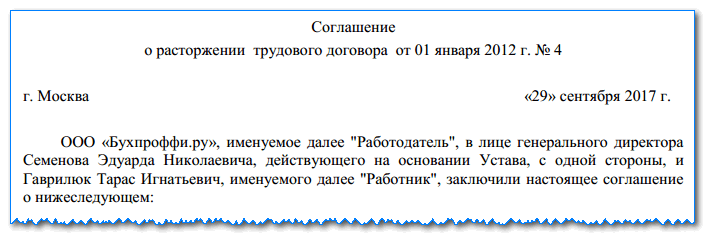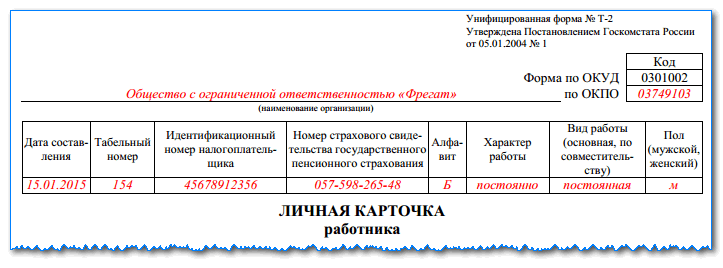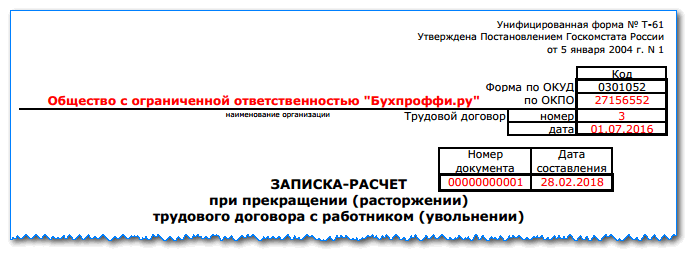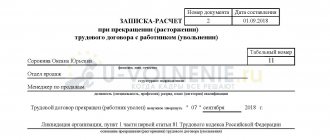Russian labor legislation includes 40 options for terminating a contract, however, in most cases, dismissal still occurs by agreement of the parties (Article of the Labor Code of the Russian Federation No. 78). Obviously, this method of terminating the employment relationship is the least painful for both the employee and the employer, and therefore it is a priority. However, dismissal by agreement of the parties also includes many legal subtleties, which will be discussed in this material.
Dear readers! The articles contain solutions to common problems. Our lawyers will help you find the answer to your personal question
free of charge To solve your problem, call: You can also get a free consultation online.
Features of dismissal

Termination of employment relations by mutual consent of the parties, according to Article 78 of the Labor Code, can be made at any stage of cooperation, including the period of maternity leave or the period of going on vacation. First of all, this is beneficial to the employer, because he has the opportunity to terminate the contract in a shorter period (provided that the employee is paid severance pay). There are also advantages for the employee himself: a) he does not have to comply with the statutory deadline for warning the employer about termination of cooperation; b) severance pay for a certain period of work is paid in full.
Important! The process of terminating a contract under Article 78 of the Labor Code of the Russian Federation is also significantly accelerated due to the fact that there is no need to obtain permission from a trade union organization, which in other cases may prevent an employer from dismissing an employee.
If an employee is forced to quit, Russian labor law forces the employer to cooperate with the union.
General grounds for termination of employment relations
At the legislative level, an exhaustive list of universal reasons is provided that can become the basis for severing previously established labor relations. These procedures are regulated by Chapter 13 of the Labor Code.
Such a break can occur:
- when the employee desires it;
- the initiative for dismissal is taken by the administration;
- by mutual agreement of the parties.
In the first case, the legislator exercises the employee’s right to change his place of employment with some restrictions. Usually they are associated with certain production issues. In particular, the need to ensure continuity of the technological process. Immediately, the need arises to redistribute the work among the remaining workers or to find a new person to fill the vacancy that appears.
When the initiative to rid the company of a specific employee is taken by the administration, it will be necessary not only to select a basis clearly stated in the law, but also to complete the entire procedure of registration, coordination with trade unions, analysis of the case, and informing the employee. Violation of the procedure is fraught with the restoration of the citizen to his previous position, the need to pay him a monetary allowance for the entire period of the proceedings, as well as (if considered and accepted by the court) material compensation. Therefore, it is necessary to act here in accordance with the clear requirements of the law.
If the parties reach a consensus and decide to disperse peacefully, then Article 78 of the Labor Code will be applied, allowing termination of labor activity by consent of the parties. It is important to note that consent can be either oral or written. In any case, the citizen is obliged to write a written resignation letter to the employer for this reason, and the employer puts a resolution “for execution” on such a statement. This will be evidence of the approval required by the dismissal procedure.
A citizen can be dismissed from work only on grounds clearly provided for by labor legislation.
Severance pay amount

Article 78 of the Labor Code (like any part of the Labor Code of the Russian Federation) does not provide for a specific amount of compensation that an employee can count on upon dismissal. It is only stated that the maximum amount of compensation cannot exceed three salaries of employees if the dismissed person worked at his workplace for at least 26 weeks. If the company administration refuses to pay compensation (and this was specified in the additional agreement), then in such a situation the dismissed person has legal grounds to start legal proceedings. The additional agreement can be terminated, but according to government regulations, the consent of both parties must be obtained for this.
Is it possible to cancel dismissal by agreement of the parties?
The procedure for voluntary dismissal provides for the opportunity for a citizen to withdraw his application at any time before the day of dismissal and continue working.
Moreover, if another person has not yet been hired for this position by transfer from another city or locality, such a citizen does not have other benefits provided for by law, the employer does not have the right to prevent the employee from continuing to work. We recommend you study! Follow the link:
Does the Labor Code allow the dismissal of a pregnant woman?
It should be noted that in the process of canceling a previously made decision to resign by agreement of the parties, a slightly different principle applies. The fact is that the key point of such dismissal is the presence of mutual consent of the parties.
Therefore, in order to cancel such an agreement, it is necessary to take into account the following points:
- in order to cancel a decision on dismissal, the consent of the administration and the employee is necessary (one request from the employee to withdraw a previously submitted application is not enough here);
- this must be carried out before the date of dismissal (after this day the employee can only register for work again or be reinstated by a court decision);
- the compensation funds paid, if provided for by the collective agreement, will have to be returned or they will be deducted from future wages.
The peculiarity of canceling dismissal orders by agreement of the parties to the labor relationship is the need to obtain the consent of both parties to such actions.
Possible pitfalls
If we are talking about termination of the relationship between the employee and the employer, then, according to the first provision of Art. 78 of the Labor Code of the Russian Federation, then the entire dismissal process most likely resembles a game of chess, since each side wants to make the most profitable move. The employer wants to dismiss the employee as quickly as possible without possible legal consequences, while the employee himself wants to receive the maximum possible compensation. If the organization is too interested in the employee leaving, then it is quite possible that the organization will pay several salaries more, if this is possible.
Which document should contain the condition for the payment of “compensation”
Is it necessary to have a condition on the payment of “compensation” in an employment (collective) agreement or is it sufficient to indicate it only in the agreement on termination of the employment contract?
If we are guided by the literal wording of Art. 178 of the Labor Code of the Russian Federation, then we are talking exclusively about labor and collective agreements. Therefore, there is an opinion that reflecting the condition for the payment of “compensation” only in the agreement on termination of the employment contract is insufficient. But there is also an opposite opinion, which is based on the fact that since the agreement to terminate the employment contract is an integral part of it, then the condition for the payment of “compensation” can only be contained in it.
An analysis of judicial practice regarding disputes arising between an employer and an employee has shown that the courts do not have a uniform approach to this problem.
For example, some courts note that labor legislation does not provide for the right of parties to labor relations to determine the condition for the payment of severance pay when concluding an agreement to terminate an employment contract (appeal ruling of the Sverdlovsk Regional Court dated June 30, 2016 in case No. 33-9473/2016). As a result, a decision is made in favor of employers who wish to return amounts previously paid to the employee only on the basis that the obligation to pay them appears in one agreement on termination of the employment contract. A similar outcome is contained in the appeal ruling of the St. Petersburg City Court dated February 24, 2016 No. 33-3415/2016 in case No. 2-6251/2015. But in this case, the arbitrators' reasoning is somewhat different. The court concluded that the agreement to terminate the employment contract is not an additional agreement to the employment contract, changing the terms of the latter, but a basis for terminating the employment relationship and terminating the employment contract.
However, in most cases, the courts still take the opposite position, pointing out that the agreement to terminate the employment contract is an integral part of it (appeal ruling of the Moscow City Court dated December 14, 2020 No. 2-2613/2020, 33-421000/2020, appeal ruling Moscow City Court dated September 16, 2019 in case No. 33-38943/2019, appeal ruling of the Moscow City Court dated March 26, 2019 in case No. 33-13309/2019).
In addition, each specific case has its own circumstances. For example, in one case, a dispute was lost by a former employee for the reason that the employment contract stated one reason for payment of monetary compensation (dismissal in connection with the decision of a person exercising the rights and obligations of the employer on behalf of the company), while another was specified in the agreement grounds (dismissal due to agreement of the parties) (determination of the Judicial Collegium for Civil Cases of the Supreme Court of the Russian Federation dated August 10, 2015 No. 36-KG15-5).
Thus, one can, of course, confine oneself to mentioning the payment of “compensation” in only one agreement on termination of an employment contract, considering that the organization itself does not bear any risks (in the above-mentioned court decisions, negative consequences arose for employees). But, as practice shows, employers themselves may also have risks in this case.
Cancellation of additional agreement

As noted above, dismissal by agreement of the parties (Article 78 of the Labor Code of the Russian Federation) can only take place on the basis of an additional agreement, which is drawn up in accordance with all of the specified recommendations. But there are times when the situation has changed and there is no longer a need to fire an employee. What should the parties to the legal relationship do in this case?
An additional agreement by agreement of the parties can be canceled, but for this one condition must be met - the desire of both parties to the legal relationship.
In a situation where the employee himself wants to return to work, he must submit a written application to the head of the company with such a request. If 14 days have not yet passed since the order was issued, then the employer does not have the right to refuse it. In order for a dismissed employee to be able to resume his or her job duties, it is necessary to issue an order to cancel the additional agreement.
Is it necessary to work out upon dismissal by agreement of the parties?
Considering that the procedure for dismissal at will requires working for a two-week period before the date of dismissal, many are concerned about whether such rules apply to dismissal by agreement of the parties.
It should be noted that the legal regulation of dismissal by mutual consent does not provide for any restrictions in the process of exercising the right to terminate employment in this way. On the contrary, numerous explanations and judicial practice proceed from the fact that there is a voluntary agreement between the administration and the employee.
Therefore, dismissal under Article 78 of the Labor Code will be carried out within the following periods:
- Day of application. This usually happens when the application itself does not indicate the date of dismissal. At the same time, the manager, by his resolution, also did not determine when the employment relationship should be terminated. Therefore, in the process of drawing up an order, the personnel employee is guided by the date the application was written or the date of its official registration in the office. It is not necessary to put a different date of dismissal in the order and further justify this with a verbal agreement. After all, a dismissed citizen can always retract his words if they are not supported by documents. An alternative is to equate such dismissal to dismissal at the initiative of the employee and maintain a two-week period.
- The day specified in the application. Considering that termination of an employment agreement by agreement of the two parties can occur on any date, it is optimal if this date is indicated in the application. It should be noted that when writing an application, you simply need to put a date (dismiss on 08/20/2018) so that the parties treat the last working day in the same way. It is better to avoid putting any pretexts before the date (for example, “dismiss from 08/20/2018”), which could become a formal reason for appealing the dismissal procedure.
- The day designated by the manager's resolution. Often, an employee who has decided to resign makes an appointment with the manager with a written resignation letter without putting a date. In the process of communication, the parties reach a certain agreement, including the date of termination of the employment relationship. It is this date that is indicated in the resolution and will be the basis for inclusion in the corresponding order. This form does not contradict the law, given that agreement can even be oral.
A feature of dismissal by consent of the parties is the need to reach an agreement when the employment contract is terminated, and this date is not regulated in any way by law (it can be the same day, or maybe in a month or at another period of time).
How to formalize the termination of an employment contract by agreement of the parties?
Step 1. Draw up an agreement with the employee
The Labor Code does not indicate in what form such an agreement should be drawn up - written or oral. But in order to further prove the agreements reached, it is better to do this in written format in two copies - each party receives one copy.
Some points to mention in the document:
- Last day of work in the company;
- Opportunity to get vacation before dismissal;
- The amount of monetary payment, including the availability of compensation for dismissal;
- Procedure for training a new employee;
- Etc.

Attention! If the dismissal agreement is signed by agreement of the parties, then any conditions can be changed only with the consent of both parties. Doing this unilaterally is prohibited.
Step 2. Drawing up a dismissal order
For a dismissal order, there is a standard T-8 form developed by the State Statistics Committee. Companies can also draw up such an order in any form on company letterhead.
In the column containing information about termination of the contract, you must enter: “By agreement of the parties, paragraph 1 of part 1 of Article 77 of the Labor Code of the Russian Federation.”
In the column with the supporting document you need to enter the details of the executed agreement on termination of the contract.

After the document is completely completed, it must be registered in the order register and submitted to the head of the company for signature.
Step 3. Familiarization of the employee with the dismissal order
After the order is drawn up and signed by the manager, the form must be given to the resigning employee for review and signature. Thus, he confirms that the document has been read. The signature and date are placed in the fields specially designated for this purpose.
If the employee cannot familiarize himself with the order, or he refuses to sign on it, it is necessary to draw up a report on this event. In the presence of witnesses, a document is drawn up, the details of which must then be indicated on the order in the field intended for signature.
The employee may receive a copy of the dismissal order, but to do this he must submit the request in writing. The employer does not have the right to refuse such a request, and must hand over a copy within three days.
Step 4. Making the necessary entry in your personal card
An employee’s personal card is a document that is issued to a person at the time he starts working at an enterprise. There is a special T-2 form for it.
To reflect information about dismissal on the card, use the section “Grounds for termination of an employment contract.”
Here you need to indicate the date of dismissal, content (reason with reference to the Labor Code), as well as details of the order.
After the entry is made, it must be checked by the personnel officer and signed in the box. After this, the card is handed over to the person leaving, who also checks the specified information and confirms familiarization with a personal signature.

Employee personal card form T-2 sample filling 2017
Attention! In the event that an employee refuses to sign the card, a report on this is drawn up in the presence of the commission. These documents are subsequently stored together in the archive.
Step 5. Entering information into the work book
When the basis for the termination of an employment contract is the concluded agreement of the parties, the entry in the labor contract must include a reference to Article 77 of the Labor Code of the Russian Federation: “Dismissed by agreement of the parties, paragraph 1 of part one of Article 77 of the Labor Code of the Russian Federation.”
An entry must be made only on the basis of an existing dismissal order. Information about it must also be reflected in the labor document in the last column.
The entry made is certified by the personnel officer, manager, or employee whose duties include performing such work. According to the new rules, a seal impression is no longer required. The employee must familiarize himself with the finished record and put his signature in confirmation of this.
You might be interested in:
Leave without pay: in what case is it granted, for how long, how to apply
Example, entries in the work book about dismissal by agreement of the parties:
| 1 | 2 | 3 | 4 | ||
| Limited Liability Company "Ladya" (LLC "Ladya") | |||||
| 7 | 20 | 05 | 2013 | Recruited to the accounting department as a billing accountant | Order No. 21-L dated May 20, 2013 |
| 8 | 18 | 11 | 2016 | Dismissed by agreement of the parties, paragraph 1 of part one of Article 77 of the Labor Code of the Russian Federation | Order No. 94-L dated November 18, 2016 |
| HR specialist Ignatova M.I. | |||||
| Reviewed by: Zhurba G.I. | |||||
The employee who is responsible for making an entry in the document is financially responsible for its accuracy to the resigning citizen. If an error was made in it, and it subsequently prevented him from getting a job, then the culprit will have to pay the average earnings for all those days that the victim was unable to work due to the identified error.
Step 6. Drawing up a settlement note upon completion of the employment agreement
This document must be drawn up in order to accurately determine the amount of compensation due for unused vacation, salary for the current month and other payments. To fill out the form, there is a special form T-61, which was created by the State Statistics Committee. He also made recommendations for its use.
The settlement note upon dismissal includes two sides. The front page contains general personnel information, and the personnel officer enters the information here. On the reverse side, compensation and salary are calculated, and the amount to be issued is determined. It must be filled out by an accountant.

Step 7. Issuance of salary calculations
On the day that is the last for the employee in this company, he needs to be given all the money due.
These include:
- Payment for the last month of work;
- Compensation for vacation periods that were not taken;
- Severance pay upon dismissal by agreement of the parties. Also, additional payments can be determined by an employment or collective agreement, internal regulations.
Sometimes on the final day it is not possible to hand over the paycheck to the person leaving. Most often this happens due to the fact that he is absent from work that day due to a business trip, illness or other valid reason. In such a situation, the money must be kept at the enterprise, and it is issued the next day after the former employee declares his readiness to receive payment.
In addition to cash, settlement payments can be transferred to a salary card or bank account. In these circumstances, the transfer date may be postponed to the next banking day.
bukhproffi
Important! If, for any reason, a dispute occurs between the employee and the employer about the amount of amounts to be paid, then on the specified day only that part that is not disputed by both parties must be paid. Negotiations are underway for the remaining amount, or one of the parties must begin legal proceedings.
If, before resigning, an employee decides to use the available vacation days, then he is not paid compensation for them. However, it must be remembered that providing such a rest period is the goodwill of the employer, and not an obligation.
Step 8. Preparation and issuance of documents that need to be completed upon termination of the contract
After the termination of the employment contract has occurred and the payment has been transferred, the former employer is obliged to prepare and hand over some mandatory documents:
- Work book of the employee. The personnel employee enters information about the dismissal into it and hands over the document to the resigning employee on the last day.
The employee needs to sign the entry in the work record, and also confirm its receipt by noting it in a special journal of work records at the enterprise. If a situation arises that an employee cannot pick up a work permit on the last day, for example, he went on a business trip, got sick, or for some reason simply refuses to do so, the HR officer needs to draw up a notification.
It must inform you of the need to come up to receive a work permit, or to give your consent to send the document by mail or courier service. From the moment such a message is sent to the dismissed employee, the organization is relieved of responsibility for failure to issue the work permit within the prescribed period.
- Certificate 182N about the salary accrued to the employee for the two previous years and the year of dismissal. It will be needed to calculate sick leave at the new place. The certificate is drawn up on a special form.
- SZV-STAZH report for each year of work in the company.
- On the right about accrued and transferred contributions to the Pension Fund. The document is drawn up on a special form developed by the fund.
- Copies of internal forms related to the activities of the dismissed employee. These could be orders, incentives, thanks, etc. They can be issued upon written request within 3 days. The organization has no right to refuse to issue copies of documents.
- Certificate of average salary for the employment service. The document must be issued within three days from the submission of the request. There is a special form, but organizations may not use it and issue the certificate arbitrarily.
bukhproffi
Important! For failure to issue a new SZV-STAZH certificate, the company employee faces a fine of up to 50 thousand rubles.
Dismissal by agreement of the parties or at your own request, which is better?
When deciding to terminate the employment relationship between a company and its employee, each party has the right to choose how to do this. Before starting this process, you need to weigh all the positive and negative aspects of each method, as well as correctly navigate the current situation, determining the goals of dismissal.
You might be interested in:
Dismissal of minors: legal features, guarantees, procedure
Most often, employees leave their place of work in search of more promising employers. This could be a larger salary, comfortable working conditions, etc. They are in a hurry to leave in a short time. Therefore, dismissal by agreement between the parties is more beneficial for them.
Attention! When the employee does not have a new job, he has uncertainty about the new place, then when completing the documents he may change his mind. In this case, it is better for him not to formalize dismissal by agreement between the parties in order to be able to return.






